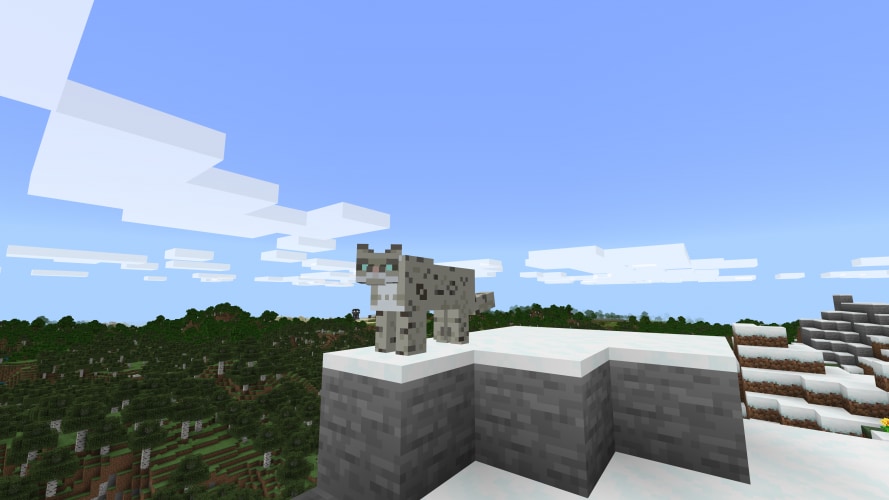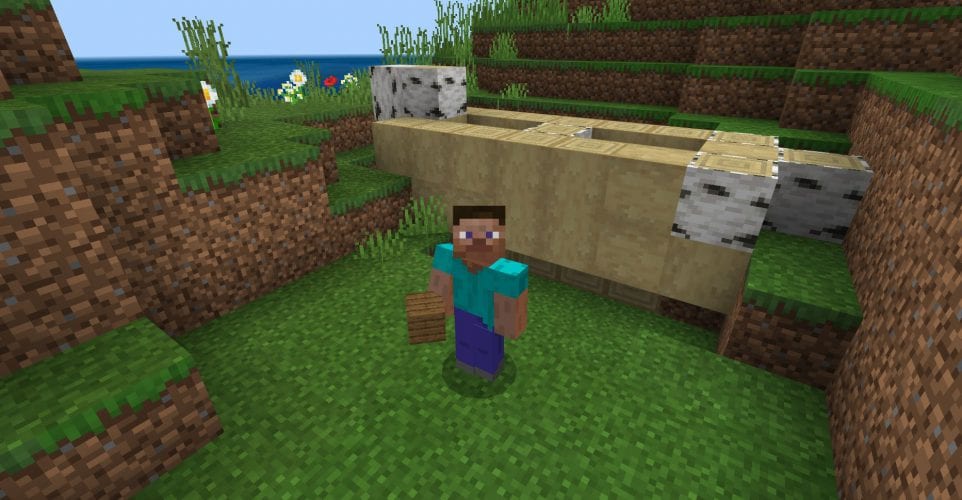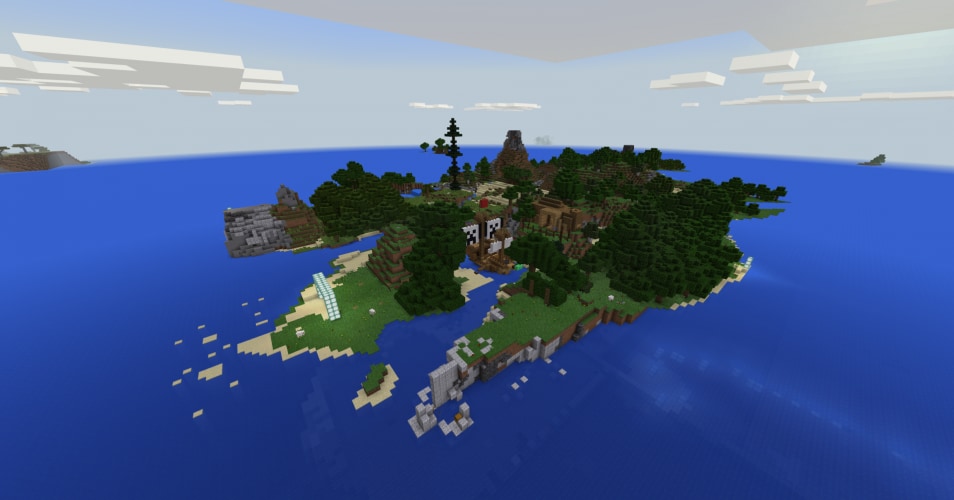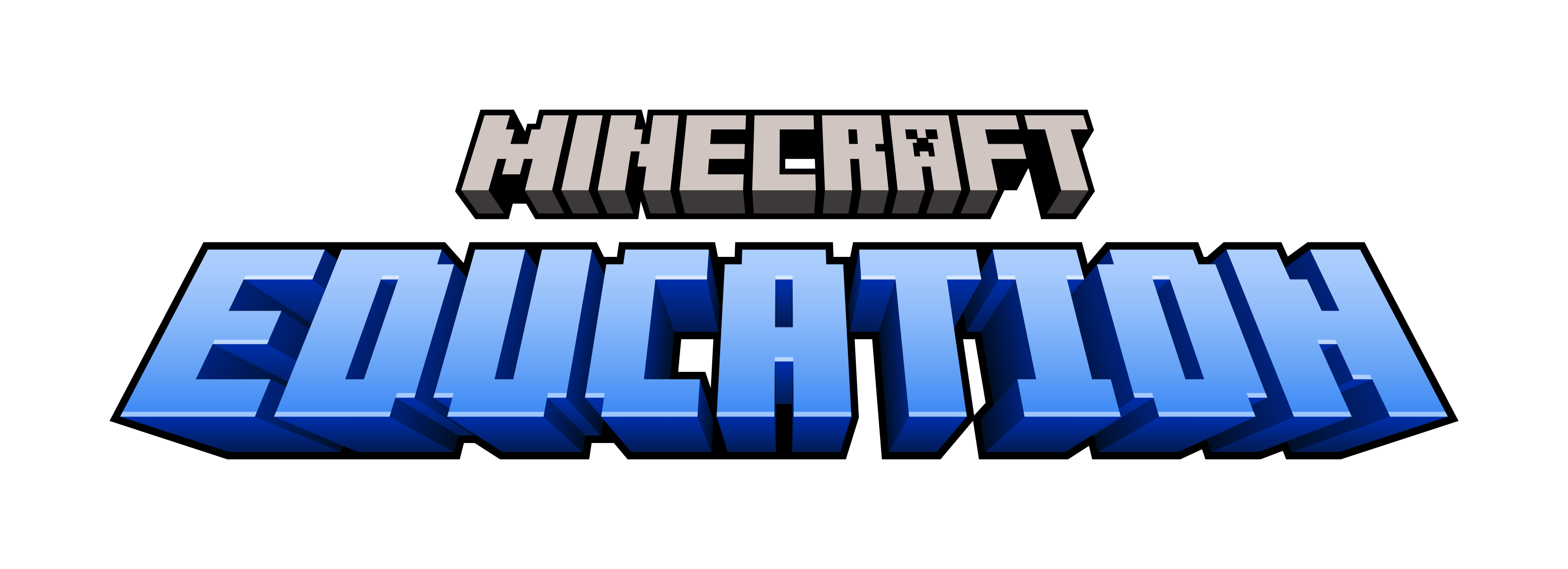Using Minecraft to Write Survival Fiction

When teachers use Minecraft: Education Edition for lessons, they usually operate in creative mode so students aren’t bothered by scarcity and the business of resource gathering—not to mention monstrous mobs prowling in the night! But Canadian educator Jim Pedrech encourages his students to lean into the challenge of survival mode as a tool for writing fiction in his English classes. Read his story in this guest post.
You know you should not be here. It was a risky decision to explore so far into the wilderness, so far from your makeshift shelter. That pile of wood and stone is not much, but at least it offers some protection from the creatures that hiss and moan in the darkness. You can still see the faint glow from the last of the lights you planted to indicate your path home. But with every step, that glow grows more distant. A few more steps and one wrong turn are all it will take for you to lose sight of them for good…
Why is Writing Fiction Hard?
Writing fiction can be hard. Very hard. In fact, for some learners, writing a work of fiction is incredibly daunting. Imagine what they might be thinking: “So, I need to craft a story, use compelling words, generate tension and stakes, and then achieve some sort of resolution. Oh! And we know authors can take years to craft their stories, but you want me to accomplish all of this in 3 days. Great.”
Even if students come up with an idea that intrigues them, it doesn’t mean the story will work. Over the years, I’ve found that students can fixate on a big narrative motion at the expense of the smaller moments that make good stories memorable. They try to frame entire epics in a thousand words, jumping between narrative points that lack the connective tissue necessary for compelling stories. Because they’re focused on telling the story, they cannot focus on how to tell the story. Plot points that show promise are not fully explored. Characters’ thoughts and emotions are summarized, not revealed, and thus lack the power to impact the reader.

How Does Playing Minecraft help?
Imagine that Minecraft isn’t a game, but reality. You wake up in an unfamiliar world, full of wild animals, lush vegetation, and, inexplicably, oversized mushrooms. Or perhaps you awake alone in a barren desert with massive stone mountains in the distance. Maybe you’re jolted from sleep by frigid water, and, steeling yourself against the cold, you swim slowly and deliberately for the icy shore. Wherever you find yourself, the game has already provided you with an essential element of storytelling: a setting.
Once you’ve got your bearings, what do you do? Explore the region? Scavenge for food? Build a shelter? Notice how these activities are really a series of much smaller tasks. Building a shelter, for example, requires you to collect resources, think of a layout, and stack wood—or, if you’re lucky, stone. Normally, you might skip these elements in your storytelling because you don’t see them fully; you might describe the process of building in a single sentence and move on. This time, however, you see these steps because you’ve played them. Essentially, your experiences are your brainstorming. Now that you have a sequential series of events, you can start writing. You can describe the materials in detail using a series of prompts you find in the classroom. Handy, right? Your story feels a lot more like, well, a story.
It’s nighttime now, and life is suddenly a lot more complicated. This world, which had once seemed so peaceful, is crawling with monsters. Strange, moaning creatures shamble through the night. Eight-legged monstrosities jump out of nowhere. Ominous hisses echo through the cave just steps away from your shelter. Of course, you are prepared. You have your trusty sword and armor, crafted in your very own forge. Using all the cunning you can muster, you evade the monsters throughout the night, reaching a nearby hilltop just as the sun rises and sets the creatures aflame. Now that is a story you can tell.
Or maybe you’re not prepared. Maybe you are petrified of these creatures. You spend the night huddled in your shelter, desperately waiting for the sun to rise. Perhaps you’ve ventured too far from home. Those torches you planted? Lost to the night. You are alone, with no way home. Suddenly, you see movement in the distance. Panic. You bolt, running wildly across the plain, desperately searching for anything that can shelter you from that fleshless thing and its deadly arrows.
Can you write that story? Of course you can. You just played it.

The Writing Tasks
Over four periods, students in my English class played Minecraft to help them write survival fiction. Essentially, they had to imagine that the gameplay was real. They wrote about their experiences in the first person, imbuing their work with descriptive adjectives and powerful verbs from a list tailored to their mission for the day. Those missions, ranging from building a shelter to dealing with monsters, served as their brainstorming. These experiences freed the students to focus on the how of the storytelling because the what had already happened.
It can take a few periods for the students to find their voice. But when they do, good things happen. There are still moments that need development, maybe a sequence that is rushed instead of fully explored. However, there is also emotion and compelling storytelling, the kind of storytelling that makes you want to read more.
At the end of the fourth task, my principal and I asked my students how they felt about their writing. The overwhelming consensus?
- The students had written more for these tasks than for any they could recall.
- Despite the length of their responses, the students felt that writing had been easy because they had so much to work with. Their gameplay had been their brainstorming.
- They were proud of their work. Many believed that it was the best writing they had ever done.
- Several said they felt more confident about their writing.
That, I think, is a story worth telling.

Jim Pedrech is an English and Canadian and World Studies Department Head in Southwestern Ontario. His goal is to provide rich and meaningful learning experiences for his students. He’s particularly interested in the roles that technology, especially video games, can play in education. In collaboration with his students, he has created video games designed to teach students about Victorian England, Ancient Egypt, and even grammar. He uses Minecraft to generate writing and for historical recreations such as archeological digs.
For the last four years, Jim has been working on the Scanning History Project, which encourages students to scan historical artifacts and add them to a virtual museum that uses the Unity game engine. He has presented at conferences in Toronto, Ottawa, Seattle, Budapest, Monterey, and Salzburg.
***
Find more opportunities for teaching writing in the English Language Arts Pack, created in partnership with the National Writing Project. If you’re new to Minecraft: Education Edition, begin your odyssey at education.minecraft.net/get-started.


